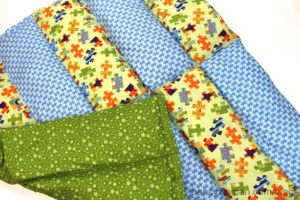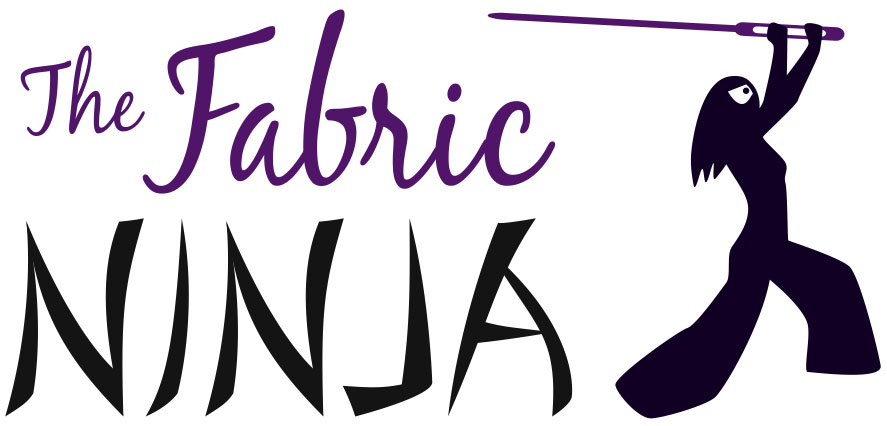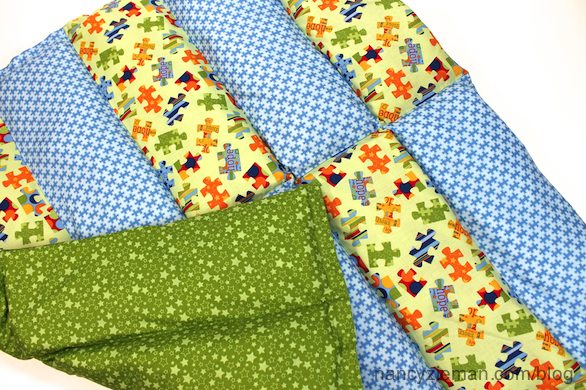So you want to make a DIY weighted blanket?!
Their are tons of resources out there, and many of them are very similar. You can spend hour basically re-reading the same stuff over and over again just to find one place with new information. So I am compiling all the information I have learned here and including my favorite resources, to save you that time. This post covers blanket patterns, the next post covers What’s inside a DIY Weighted Blanket?
This post as lots of links. I’m NOT AFFILIATED with any of these companies. The only person who benefits from clicking is you.
Since you want to make a weighted blanket, you probably already know the benefits, but if your new to the idea Friendshipcircle.org has more info. They are not just for kids, Autism, or SPD. They can be for anyone.. If you like a bunch of blankets on top of you when you sleep or just watch tv. If the lead apron at the dentist relaxes you. If the feeling of a hug, makes your muscle relax. These are all signs that you might like a weighted blanket. Not sure if a weighted blanket is right for you? Lora’s Weight Blankets has a self assessment HERE.
Blanket Patterns:
If you are looking to make a weighted blanket, you have probably looked over many tutorials and 99% are made basically the same way.
The standard way is… Two piece of fabric that are sewn with channels. Weighted beads are put into each channel, and shaken to the bottom, which is closed. The row is then sewn closed to make many closed squares. Then the next row is filled and closed. This is the standard way and there is nothing wrong with this, but it can be cumbersome to make. It’s easy to accidentally sew over a bead and break a needle. It’s also can be difficult to manage all that weight while sewing, as a sewing machine cannot pull that extra weight, it needs to be supported.
If you would like to make it the “standard” way both of these tutorials explain it very well Tutorial from Mamasmile.com & Video from Man Sewing.
General Tips:
- Work from the center out, so you only ever have to have 1/2 the blanket rolled under the machine.
- Set up your sewing machine at one corner of a large table. The blanket will be supported on the table when it’s behind the machine.
- Support the blanket on your lap and a chair next to you.
- Pre-measure weighted beads. Measure all or a few rows at at a time of your beads into cups.
- Use a long tube to help the beads reach their destination easier.
- Shake the blanket to help the beads get to the bottom.
- Keep extra needles on hand
- Find all my favorite sewing tools here
But how about something DIFFERENT!
My favorite “different” pattern is Cheryl’s Weighted Blanket which you can find though this link or on the Project Linus Website. Sewing with Nancy Zeiman even featured it on an episode. Image below from nancyzieman.com

What makes it different?
It’s easy to sew! Because the weights are removable and adjustable you don’t have sew with all the weight inside. Making it so much easier to make. The weights are also different Cheryl actually suggest using folded sheets for the weights, but you could also make divided “bean bags” to put in each section. The sheet weights are also easy to wash and dry. Not need to “air dry”, which can take a whole day.
Considerations.
This blanket uses velcro on the sides to close the pockets. Velcro can make noise when it moves, which might be over simulating for some individuals with SPD. You can solve this by using smaller pieces, so that it moves better and creates less noise.
Also sensory seekers might get fixated on opening and closing velcro. You can solve this issue by substituting a different type of hook and loop tape like Aplix, which is less rewarding noise wise. Or changing out the closure with snaps or a zipper.
More “Different” Patterns
- This blog post by Autism: Understanding the Puzzle also has a very different type of blanket. which has a separate weighted section that snap onto a blanket. I think the design is a bit cumbersome, but because it is so different I think it’s important to mention it.
- This blanket is a “low sew” option. You basically tack homemade bean bags to fleece. Then make a tie fleece blanket with the weights hidden inside. You can even untie to add more weights.
- This video also shows a very different way to make a blanket. Using long weighed sections.
Still interested? Read on to Part 2, Weighed Blankets: What’s inside?
I am currently designing a “different kind” of weighted blanket, if you are interested in learning more. Sign up here. I’ll send you an email when it’s done.


I would like to make lap pads using this method. What would be the measurements and among of beads or weight ratios to use. Probably a 3-4 lb pad for children.
It depends on how many compartments you have. Just divide up your total weight by the number of spaces, and that will tell you how much for each one.